Boris Yeltsin Worksheets
Do you want to save dozens of hours in time? Get your evenings and weekends back? Be able to teach about Boris Yeltsin to your students?
Our worksheet bundle includes a fact file and printable worksheets and student activities. Perfect for both the classroom and homeschooling!
Resource Examples
Click any of the example images below to view a larger version.
Fact File
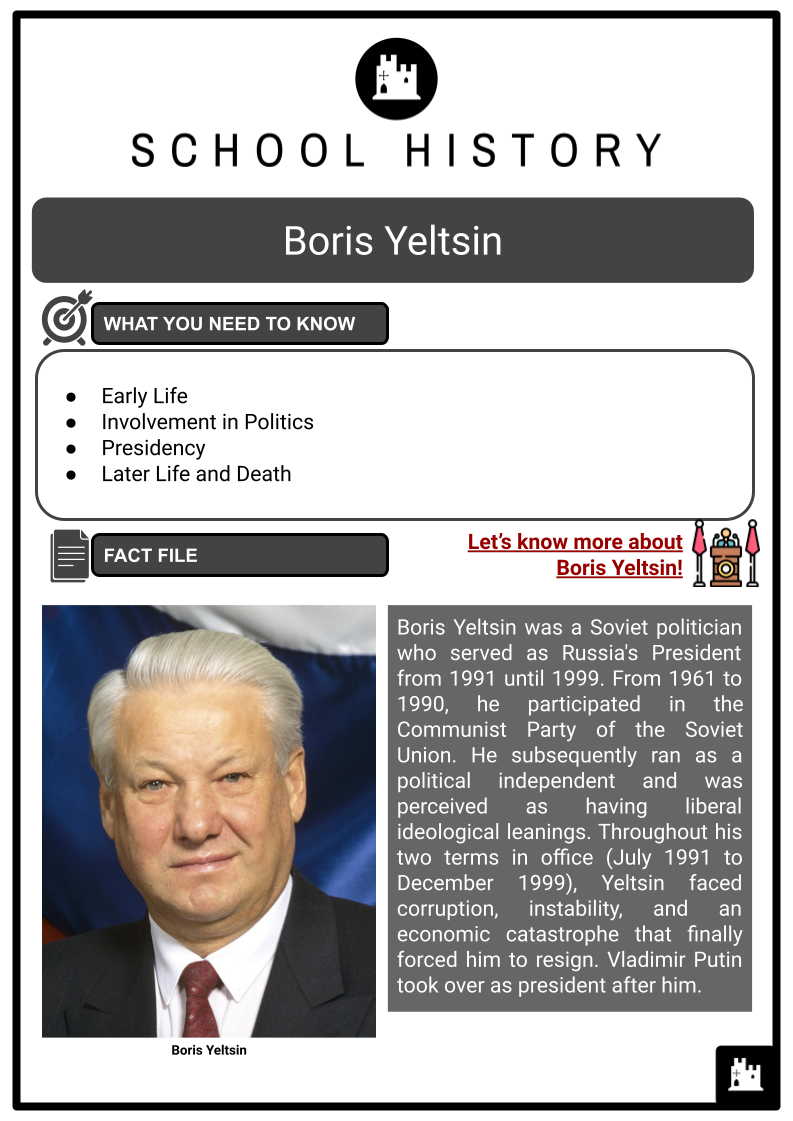
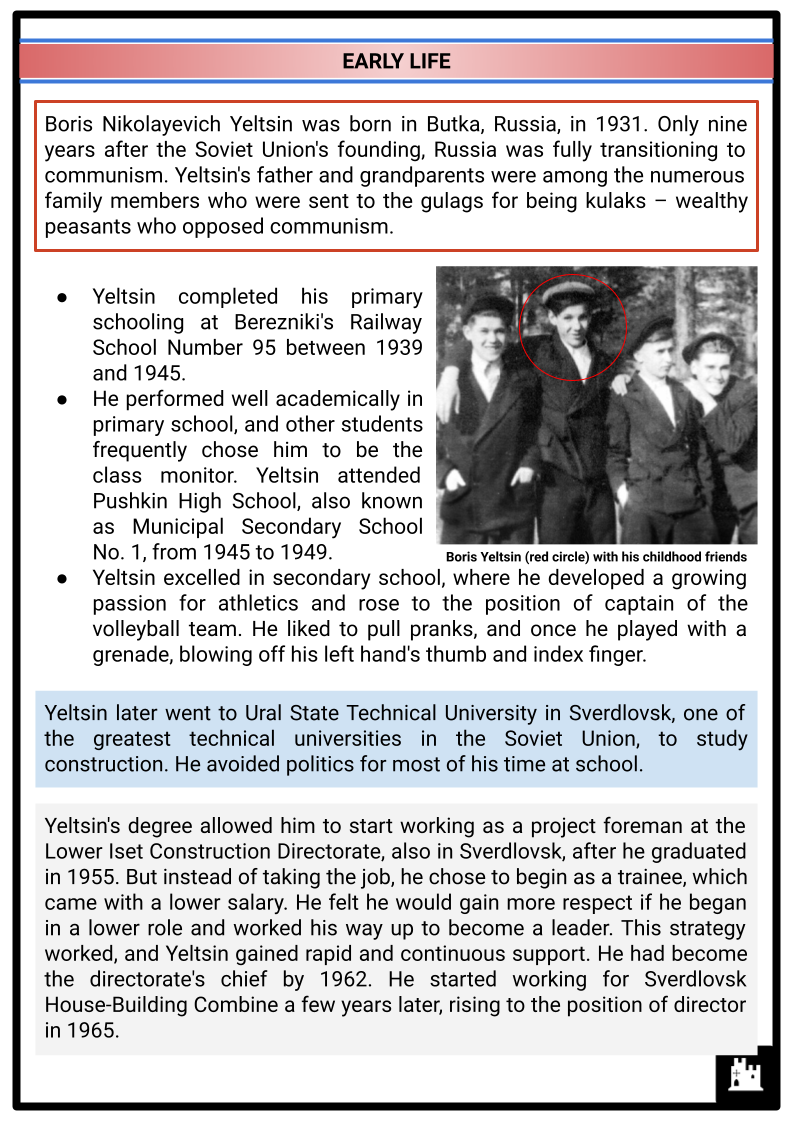
Student Activities
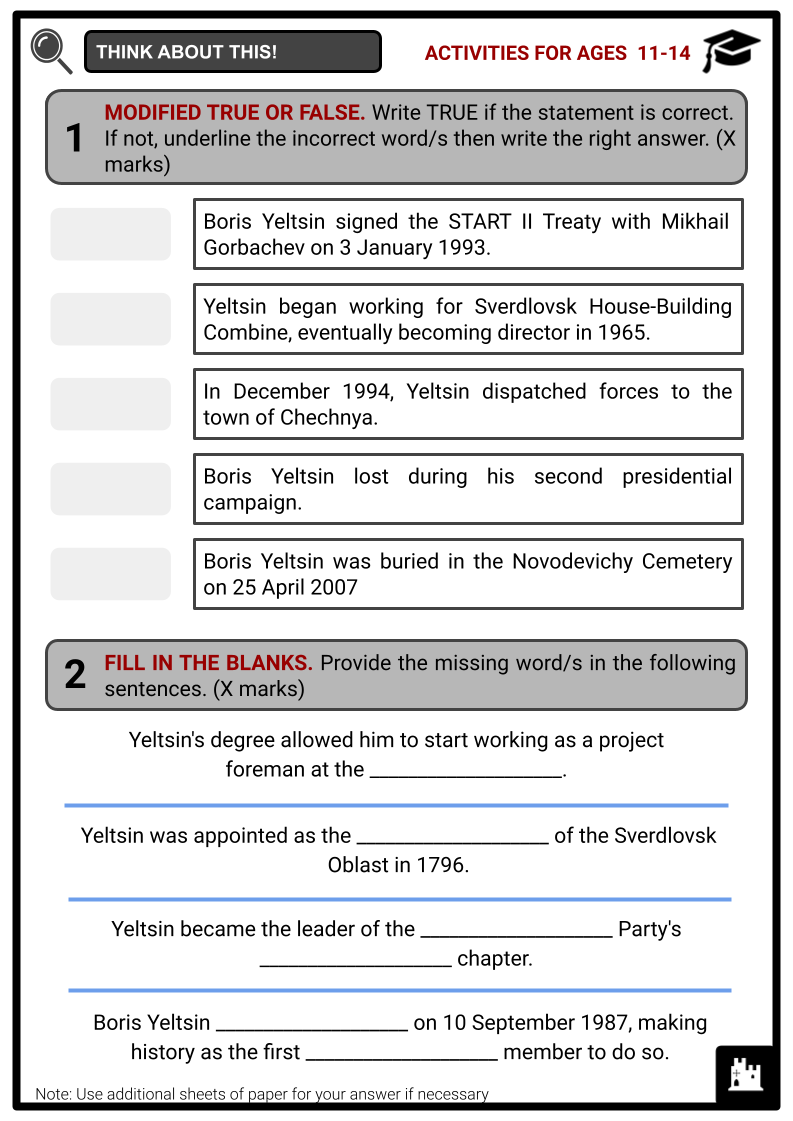
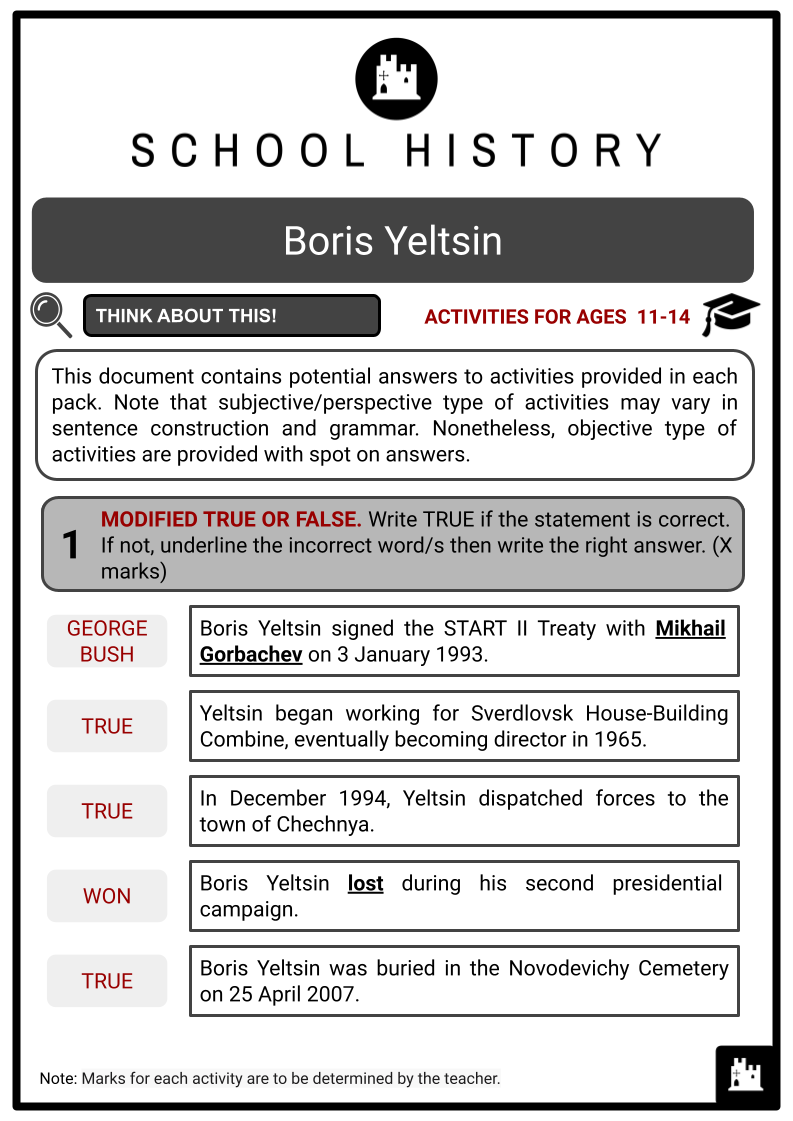
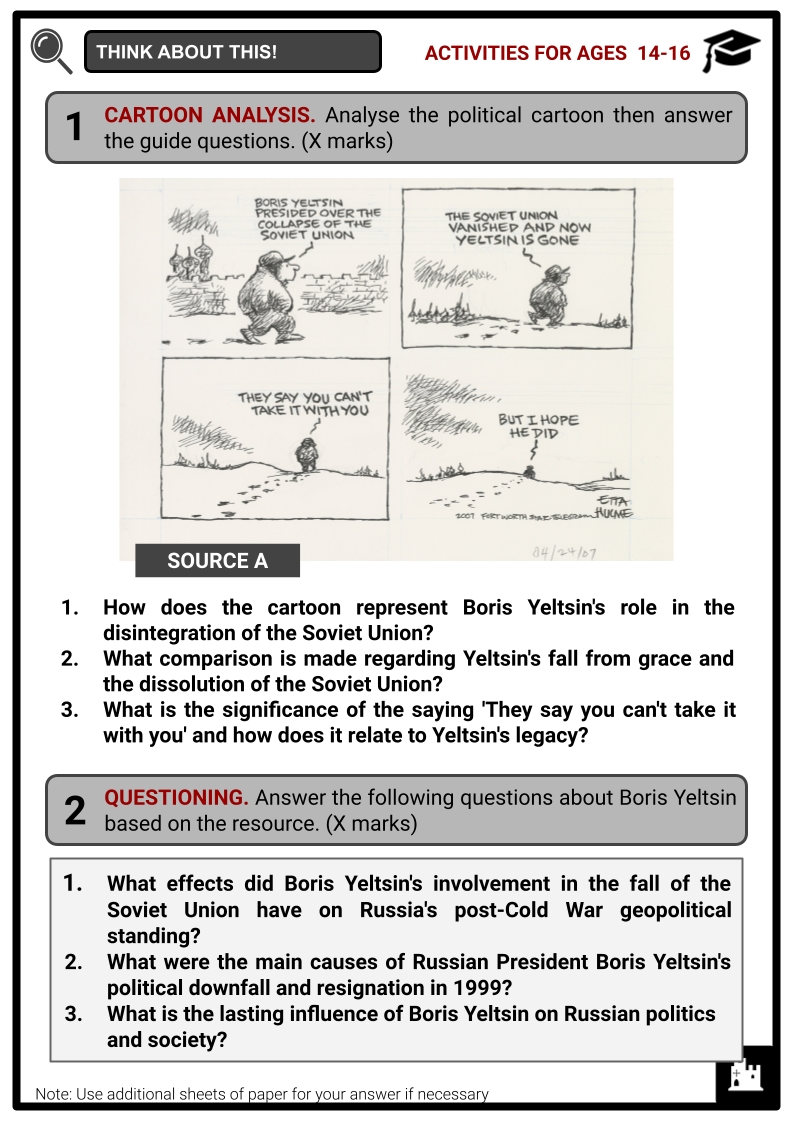
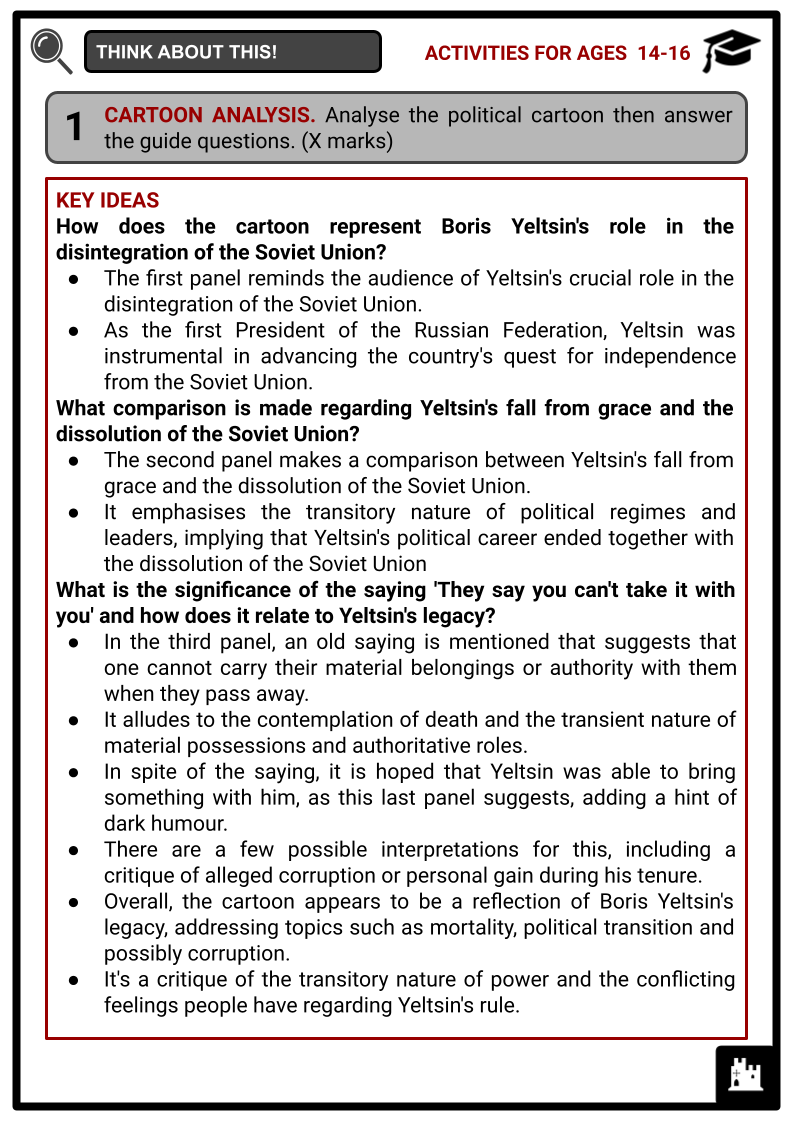
Summary
- Early Life
- Involvement in Politics
- Presidency
- Later Life and Death
Key Facts And Information
Let’s know more about Boris Yeltsin!
Boris Yeltsin was a Soviet politician who served as Russia's President from 1991 until 1999. From 1961 to 1990, he participated in the Communist Party of the Soviet Union. He subsequently ran as a political independent and was perceived as having liberal ideological leanings. Throughout his two terms in office (July 1991 to December 1999), Yeltsin faced corruption, instability, and an economic catastrophe that finally forced him to resign. Vladimir Putin took over as president after him.
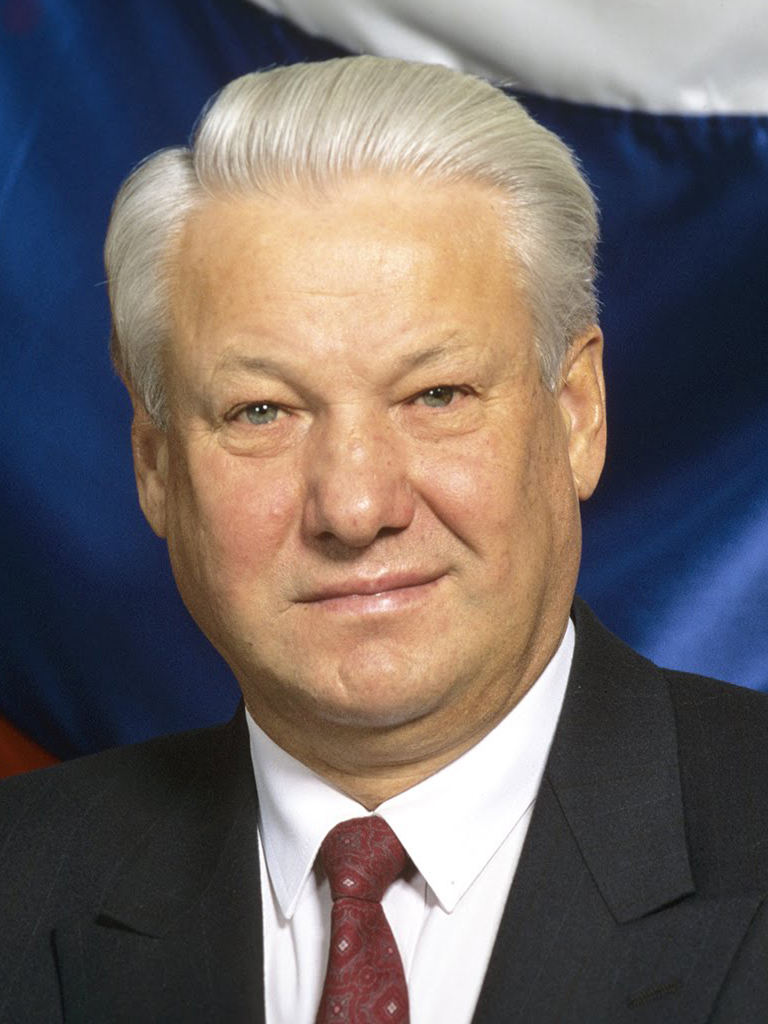
EARLY LIFE
- Boris Nikolayevich Yeltsin was born in Butka, Russia, in 1931. Only nine years after the Soviet Union's founding, Russia was fully transitioning to communism. Yeltsin's father and grandparents were among the numerous family members who were sent to the gulags for being kulaks – wealthy peasants who opposed communism.
- Yeltsin completed his primary schooling at Berezniki's Railway School Number 95 between 1939 and 1945.
- He performed well academically in primary school, and other students frequently chose him to be the class monitor. Yeltsin attended Pushkin High School, also known as Municipal Secondary School No. 1, from 1945 to 1949.
- Yeltsin excelled in secondary school, where he developed a growing passion for athletics and rose to the position of captain of the volleyball team. He liked to pull pranks, and once he played with a grenade, blowing off his left hand's thumb and index finger.
- Yeltsin later went to Ural State Technical University in Sverdlovsk, one of the greatest technical universities in the Soviet Union, to study construction. He avoided politics for most of his time at school.
- Yeltsin's degree allowed him to start working as a project foreman at the Lower Iset Construction Directorate, also in Sverdlovsk, after he graduated in 1955. But instead of taking the job, he chose to begin as a trainee, which came with a lower salary. He felt he would gain more respect if he began in a lower role and worked his way up to become a leader. This strategy worked, and Yeltsin gained rapid and continuous support. He had become the directorate's chief by 1962. He started working for Sverdlovsk House-Building Combine a few years later, rising to the position of director in 1965.
INVOLVEMENT IN POLITICS
- In 1960, the legislation prohibiting relatives of political prisoners from joining the Communist Party of the Soviet Union (CPSU) was repealed. It was in that year that Yeltsin enrolled in CPSU. Despite his repeated claims that he joined the party because he supported communist principles, he had to be a party member to advance to the position of director of the Sverdlovsk House-Building Combine. Similar to his professional progress, Yeltsin advanced quickly through the Communist Party's levels and was eventually appointed first secretary of the Sverdlovsk Oblast, a significant area of the Soviet Union, in 1976.
- With Mikhail Gorbachev's appointment as the Soviet Union's general secretary in 1985, Yeltsin's political career drove him to Moscow, the country's capital. A few months later, Yeltsin was appointed Secretary of the CPSU's Central Committee for Construction and Engineering after taking the helm of the committee for many months. Eventually, he received another promotion in December 1985, this time to become the leader of the Communist Party's Moscow chapter. This post also permitted him to join the Politburo, the Communist Party's policy-making body.
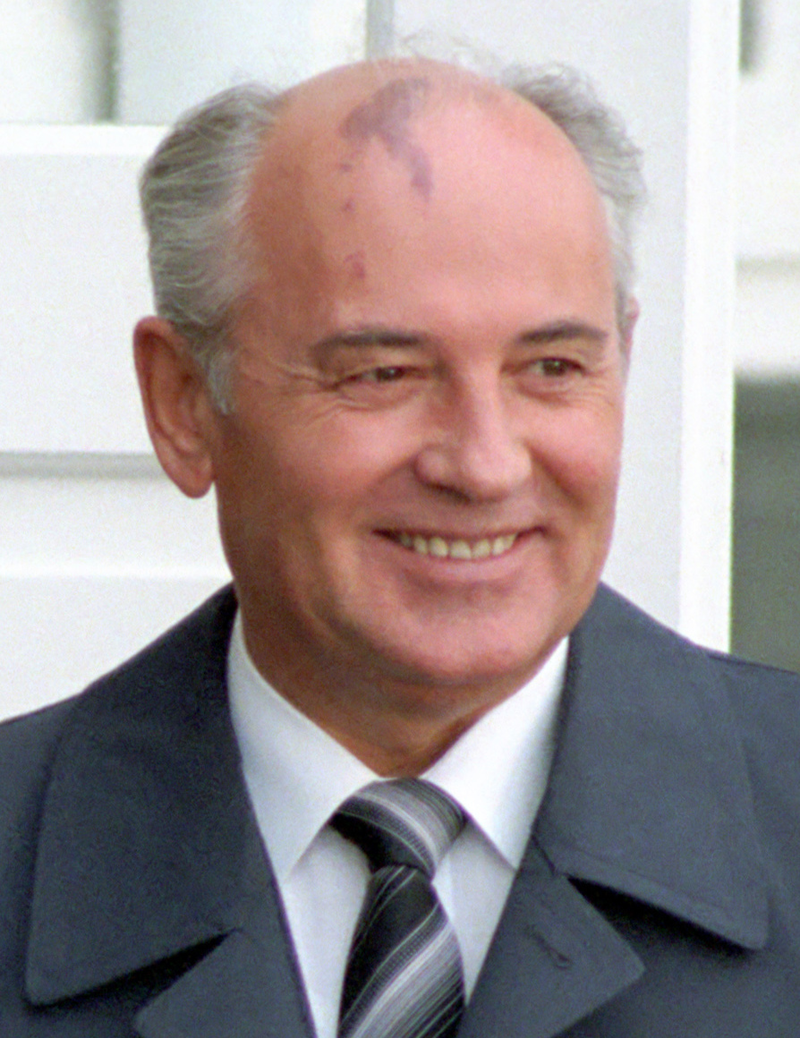
- Boris Yeltsin resigned on 10 September 1987, making history as the first Politburo member to do so. Yeltsin highlighted the shortcomings of Gorbachev and prior general secretaries by presenting six items from his resignation that had not been discussed by anybody before at a meeting of the Central Committee that October. Yeltsin thought that because the economy had not improved and was getting worse in many areas, the government was adapting too slowly.
- Following his departure from the Politburo, he was chosen to serve as Moscow's representative in the Congress People's Deputy and then to the Soviet Union's Supreme Soviet, both of which were branches of the Soviet Union's government rather than the Communist Party. On 12 June 1991, following the collapse of the Soviet Union and Gorbachev's resignation, Yeltsin was chosen to serve as the country's first president.
PRESIDENCY
- Boris Yeltsin started converting the Russian Federation to a market economy during his first term in office, rejecting the social and economic structure that had characterised the Soviet Union for decades prior. He embraced capitalism and removed pricing limits. However, significant price increases plunged the developing nation into an even deeper decline.
- Yeltsin carried out a number of initiatives during his administration with the goal of changing the political and economic climate in Russia.
- The objective of his economic policies, which encompassed privatisation and shock therapy, was to shift Russia's economy from a centrally planned to a market-oriented framework.
- Although these changes brought about liberalisation and economic expansion, they also fuelled social upheaval and pervasive inequality.
- Yeltsin also brought about political changes, such as the 1993 ratification of a new constitution, with the intention of establishing a more democratic political structure.
- However, charges of authoritarianism and the repression of political opposition plagued his administration, highlighting the complicated legacy of his governance.
- Yeltsin was a key figure in Germany's reunification, which represented a watershed moment in European history. In the midst of the collapsing Soviet Union, Yeltsin took a pragmatic approach, acknowledging the likelihood of German reunification. Despite worries from hardliners within his own administration, Yeltsin participated in diplomatic talks with German Chancellor Helmut Kohl and other Western leaders, eventually helping the peaceful reunification process in 1990. His openness to embrace change and prioritise diplomacy aided Germany's reunification within the context of European stability.
- Later in the term, Yeltsin signed the START II Treaty with George H. W. Bush on 3 January 1993, taking a step towards nuclear disarmament. According to the deal, the Russian Federation had to reduce its nuclear arsenal by two-thirds. Due to widespread opposition from Russians to what seemed to be a power transfer, this agreement made him even less popular.
- Yeltsin decided to dissolve the current parliament and provide himself more authority in September 1993. This decision sparked protests in early October, which Yeltsin quenched with a stronger military presence. After the riots were put down in December, the parliament passed rules allowing private property ownership and a new constitution giving the president additional power.
- Yeltsin dispatched forces to the town of Chechnya in December 1994, a year after the region had proclaimed its independence from the Russian Federation. This invasion transformed his image in the West from democratic saviour to imperialist.
- Boris Yeltsin's relationship with NATO was characterised by both partnership and tension.
- Yeltsin initially demonstrated willingness to collaborate with the alliance, even joining the Partnership for Peace programme in 1994.
- However, tensions emerged, notably around NATO's expansion into former Soviet bloc nations.
- Yeltsin strongly opposed NATO's eastward expansion, seeing it as a danger to Russian security.
- Despite efforts to preserve discussion, relations deteriorated, particularly during the Kosovo War in 1999, when NATO's bombing of Yugoslavia raised Russian concerns.
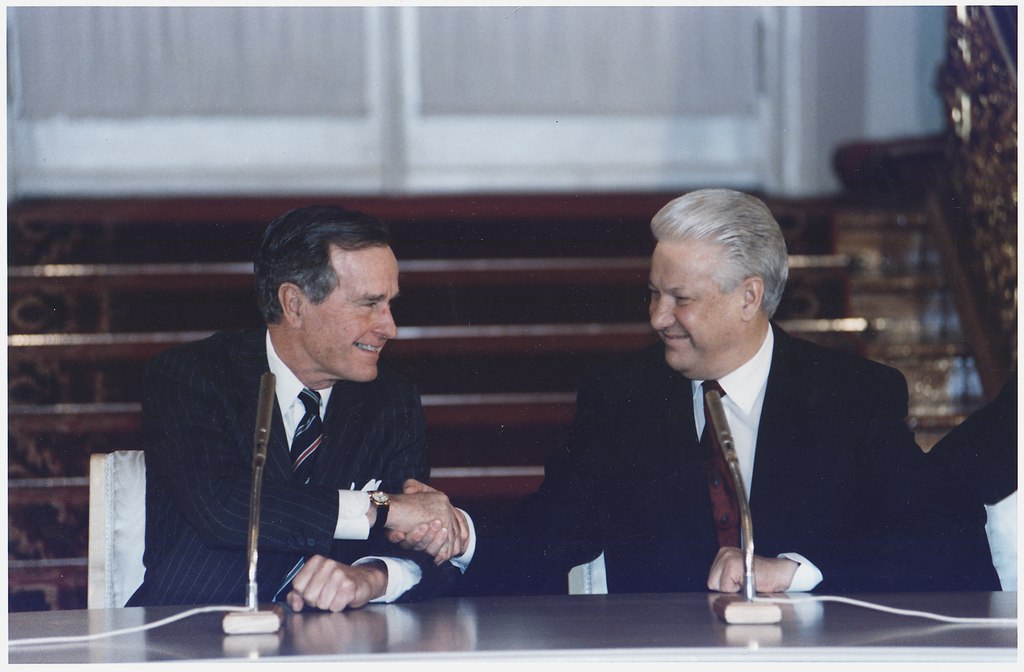
- Yeltsin's health was troubled in 1995. He experienced heart attacks and other cardiovascular problems. Reports regarding his alleged alcohol addiction had been circulating for several years. Despite these problems and his declining support, Yeltsin announced his plan to run for a second term. He triumphed in his second presidential campaign on 3 July 1996.
- His health problems returned throughout the initial years of his second term, with repeated bypass heart surgery, double pneumonia and unstable blood pressure. Impeachment procedures against him were initiated by the lower house of parliament due to the conflict in Chechnya, which was mostly caused by the opposition led by the Communist Party that remained active.
- Boris Yeltsin resigned on Russian television on 31 December 1999, declaring ‘Russia must enter the new millennium with new politicians, new faces, new intelligent, strong and energetic people. The people in authority for a long time like us have to step down.’ He concluded his speech stating that the Russians deserved happiness and peace.
LATER LIFE AND DEATH
- Following his resignation, Yeltsin remained quiet and rarely made public appearances or statements. He spent six weeks in the hospital in January 2001 due to pneumonia brought on by a viral illness. Yeltsin and Mikhail Gorbachev openly denounced Putin's proposal, calling it a move away from Russian democracy and a return to the centrally planned political system of the former Soviet Union.
- Boris Yeltsin died of congestive heart failure on 23 April 2007, at the age of 76. After his remains were laid to rest in the Moscow Cathedral of Christ the Saviour, he was buried on 25 April 2007, in the Novodevichy Cemetery. Following Emperor Alexander III, Yeltsin became the first head of state from Russia to be buried in a church service in 113 years.
- Yeltsin was recognised for his state service with 10 medals and prizes during his tenure as a prominent figure in the Soviet Union. A new Yeltsin memorial was unveiled at Moscow's Novodevichy cemetery in April 2008, eliciting conflicting views.
- A military chorus played Russia's national anthem at the mourning ceremony. The song was originally written shortly after Yeltsin's term ended and was now set to the tune of the former Soviet hymn, with lyrics that reflected Russia's newfound position.
Image Sources
- https://en.wikipedia.org/wiki/Boris_Yeltsin#/media/File:%D0%91%D0%BE%D1%80%D0%B8%D1%81_%D0%9D%D0%B8%D0%BA%D0%BE%D0%BB%D0%B0%D0%B5%D0%B2%D0%B8%D1%87_%D0%95%D0%BB%D1%8C%D1%86%D0%B8%D0%BD-1_(cropped)_(cropped).jpg
- https://en.wikipedia.org/wiki/Boris_Yeltsin#/media/File:Gorbachev_(cropped).png
- https://en.wikipedia.org/wiki/Boris_Yeltsin#/media/File:President_Bush_and_Russian_President_Boris_Yeltsin_sign_the_Start_II_Treaty_at_a_Ceremony_in_Vladimir_Hall,_The..._-_NARA_-_186462.tif
Frequently Asked Questions
- Who was Boris Yeltsin?
Boris Yeltsin served as the first President of the Russian Federation from 1991 to 1999. He played a key role in the dissolution of the Soviet Union and the transition of Russia from a socialist state to a capitalist market economy.
- How did Boris Yeltsin come to power?
From being an outspoken critic of the Communist Party's policies, Yeltsin was elected President of the Russian Soviet Federative Socialist Republic (RSFSR) in June 1991. Following the failed coup attempt against Mikhail Gorbachev in August 1991, Yeltsin emerged as a leading figure in the transition from Soviet rule to the formation of the Russian Federation.
- What were Boris Yeltsin's major accomplishments?
Yeltsin is best known for dismantling the Soviet Union and establishing the Russian Federation. He implemented significant economic reforms to transition Russia to a market economy, although these reforms were often controversial and led to significant economic hardships for many Russians.
